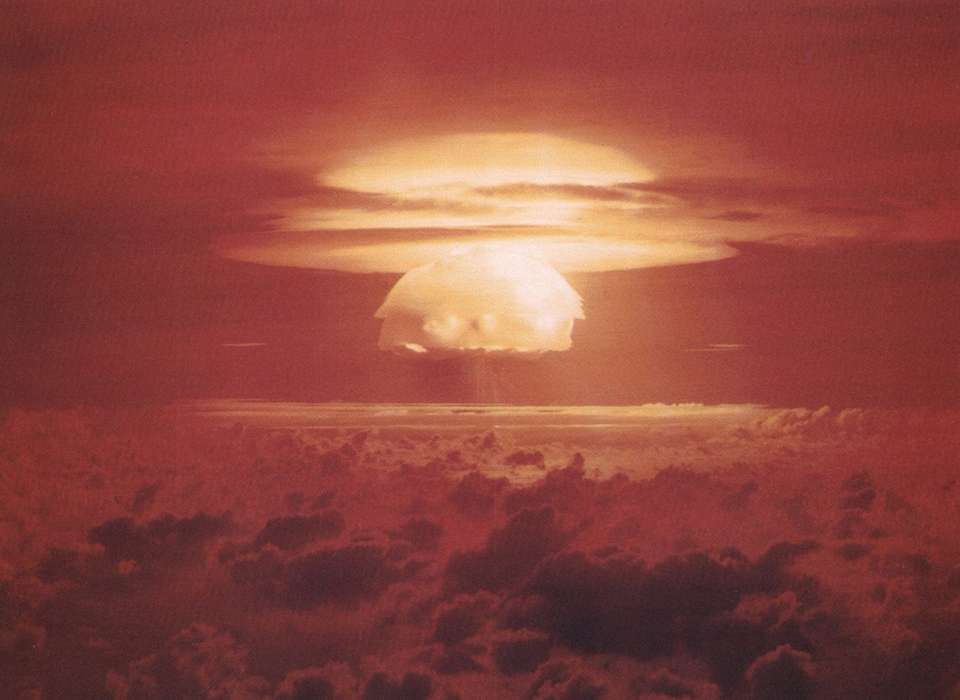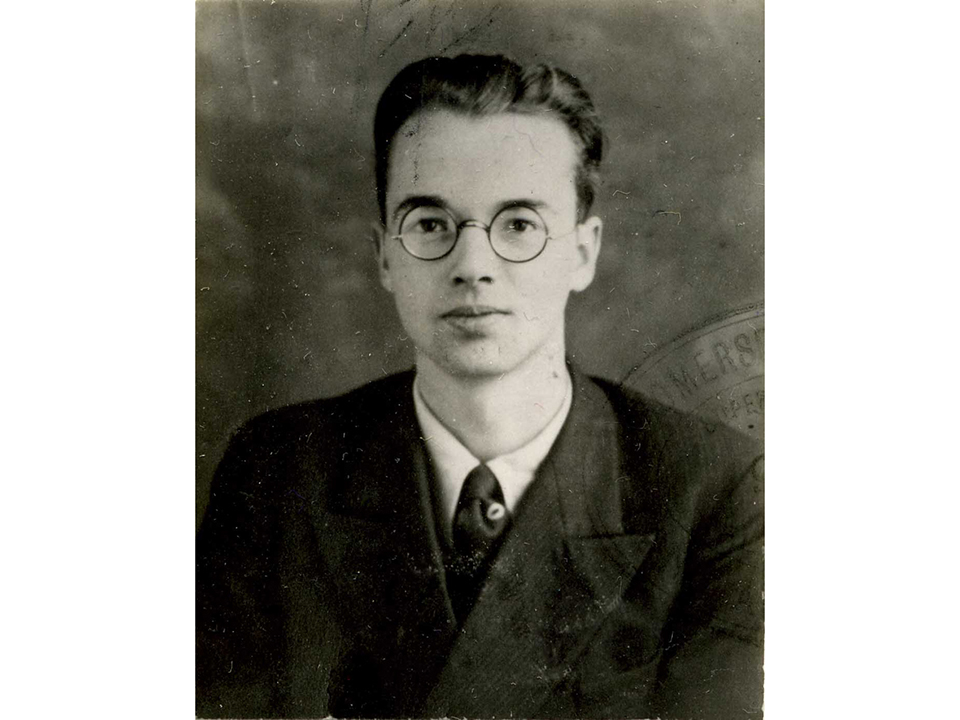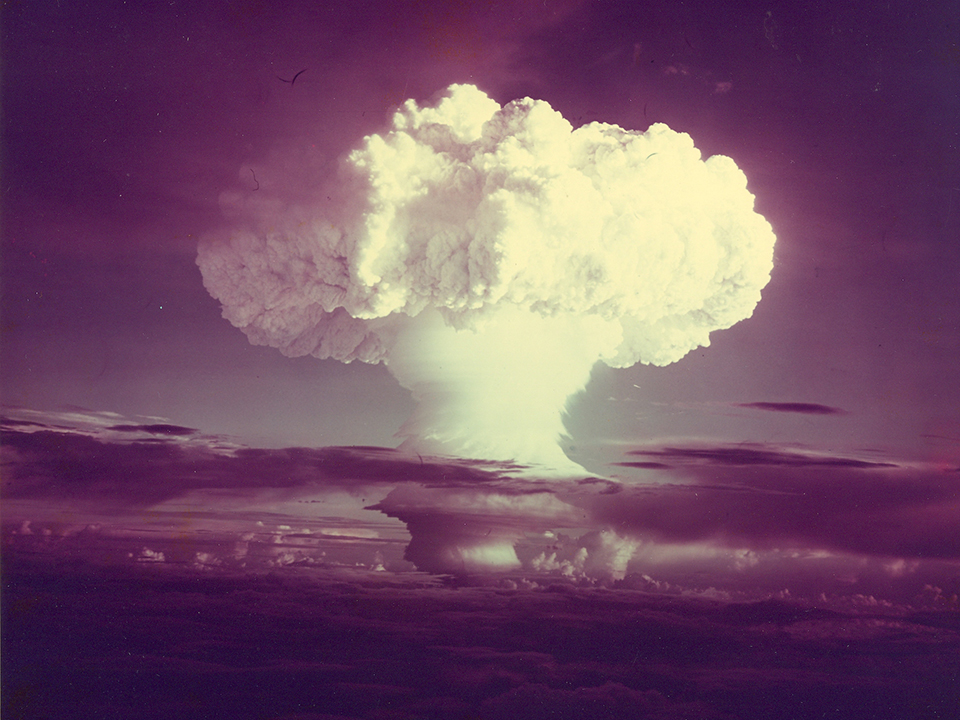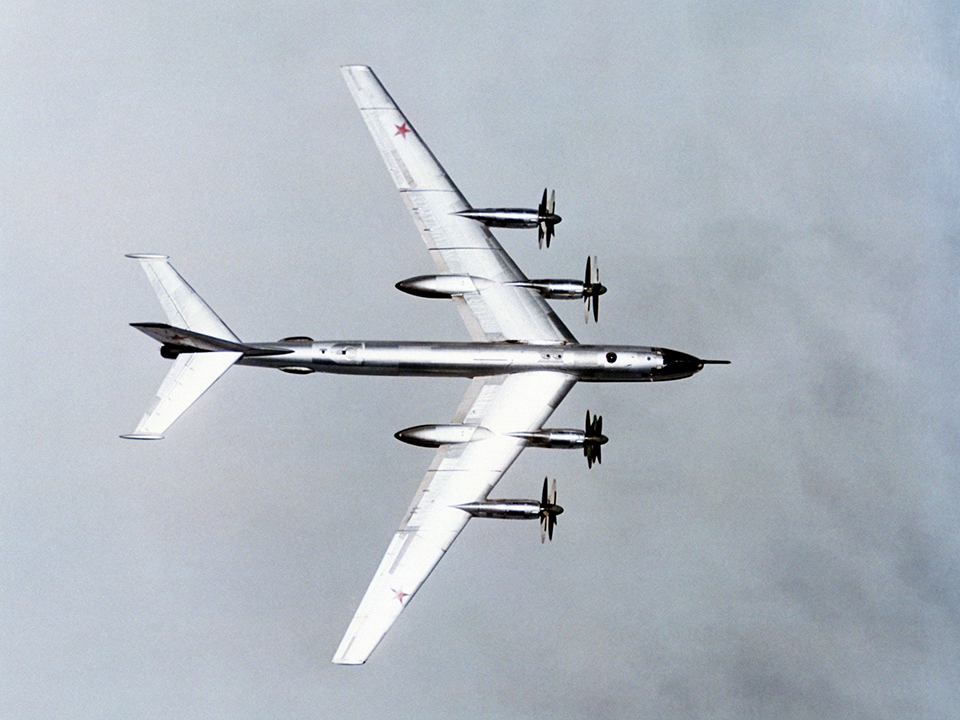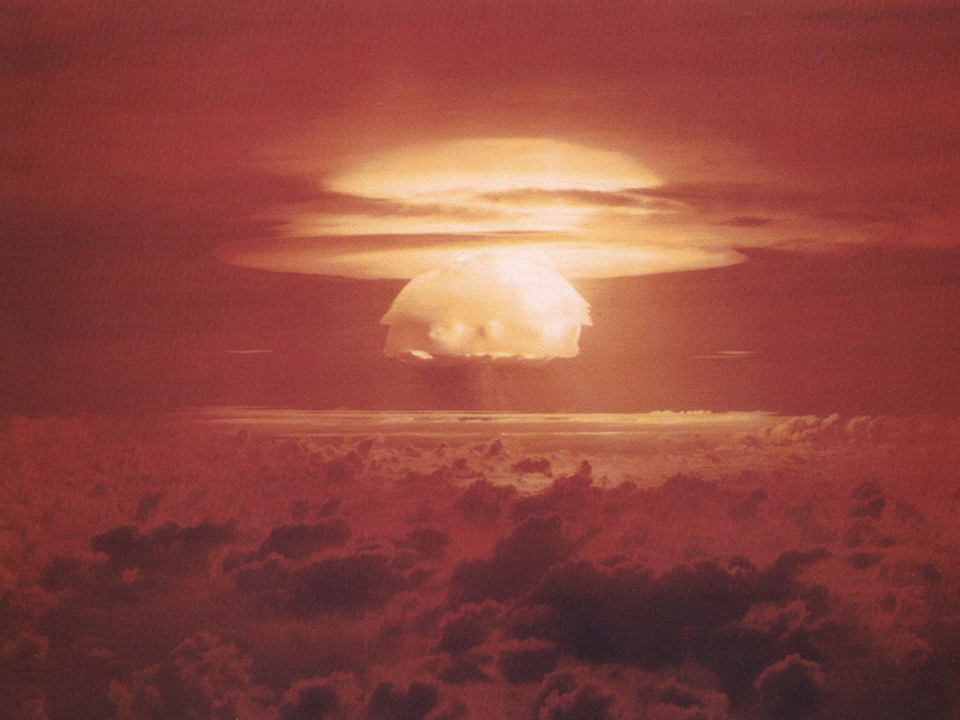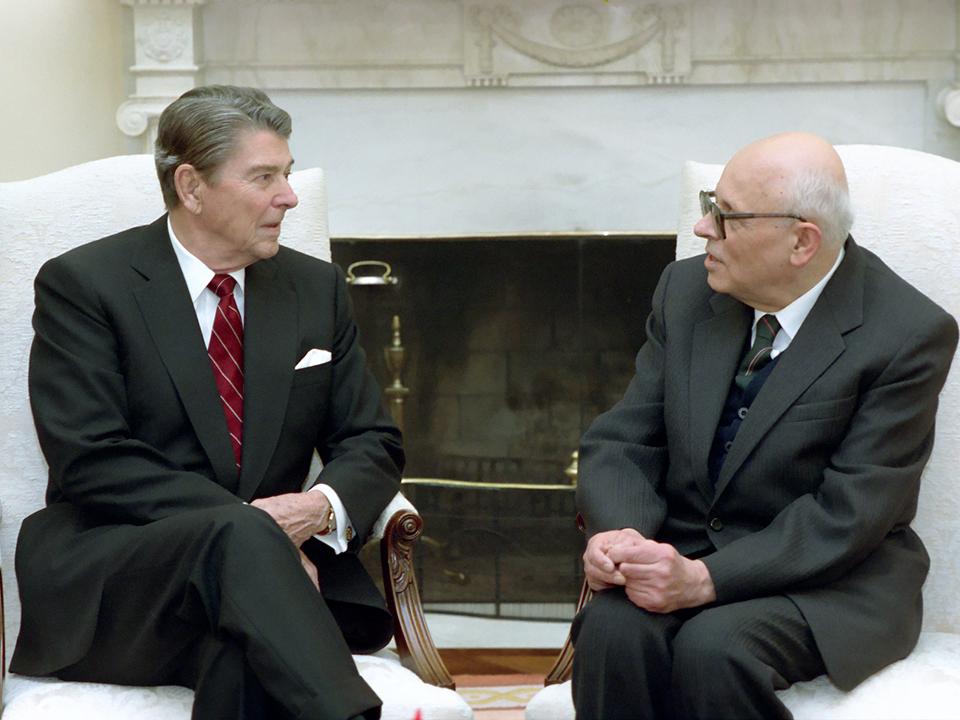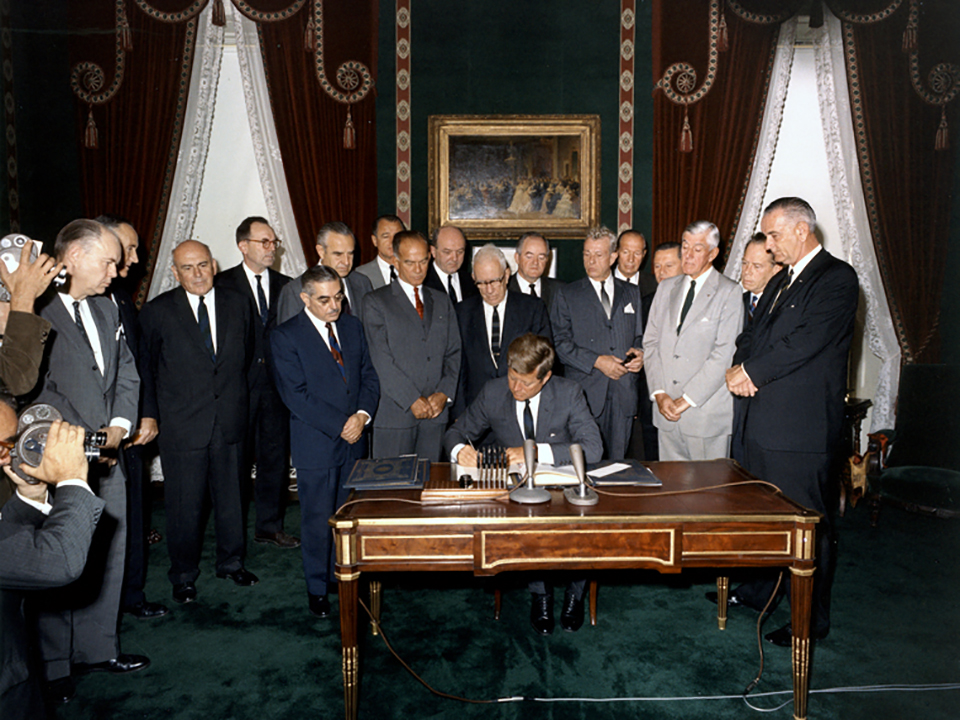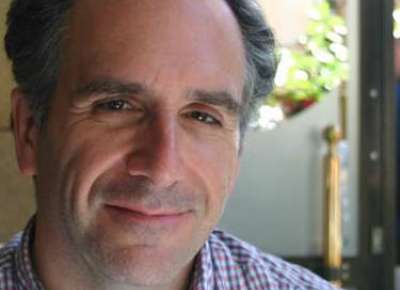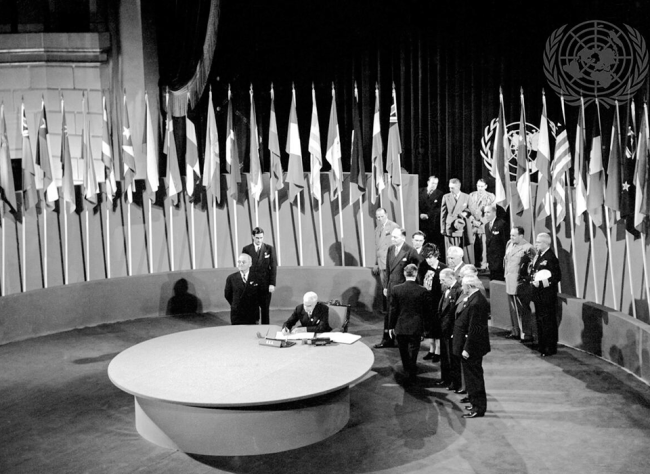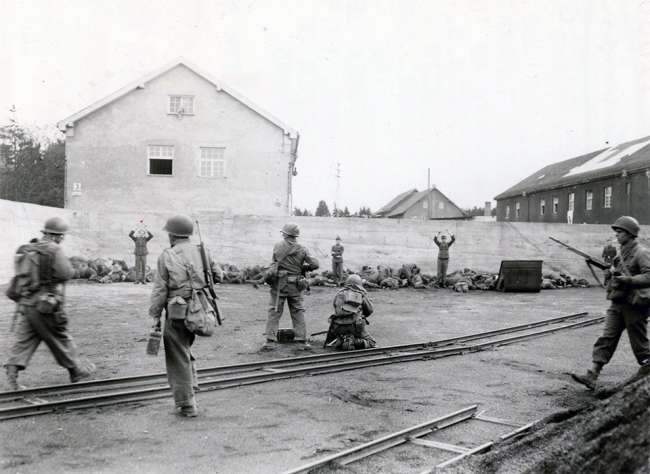The nuclear arms race that originated in the race for atomic weapons during World War II reached a culminating point on October 30, 1961, with the detonation of the Tsar Bomba, the largest and most powerful nuclear weapon ever constructed.
The atomic bombings of Hiroshima and Nagasaki on August 6 and 9, 1945, placed the United States in an apparently unchallengeable position as the world’s only possessor of nuclear weapons. But that primacy didn’t last long. The Soviet Union had made halting progress in its own nuclear weapons program during the war, and in 1945 Soviet Premier Joseph Stalin ordered an intensification of these efforts. Soviet penetration of the British and American atomic weapons programs thanks to the activities of spies such as Klaus Fuchs aided the efforts of Soviet scientists to design and construct their own weapons.
The Soviets successfully tested their first atomic weapon on August 29, 1949, after which both superpowers upped the ante by working furiously to develop the far more powerful thermonuclear weapons, or hydrogen bombs. The United States got there first, testing their Ivy Mike Test on November 1, 1952; but once again the Soviets were close behind. Soviet scientist Andrei Sakharov, heading his country’s research into thermonuclear weapons (thanks again in part to information provided by Fuchs) oversaw the detonation of a hydrogen bomb on August 12, 1953 at the Semipalatinsk test site in what is now Kazakhstan.
From there the United States and the Soviet Union carried out a further series of open-air tests of atomic weapons. Great Britain emulated these with open air atomic weapons tests in the late 1950s (France would follow with tests in Polynesia in the 1960s and beyond.) While the Americans focused on perfecting accurate delivery systems for small to medium size atomic devices, however, the Soviets concentrated on building larger and larger devices of almost unimaginable power. The Tsar Bomba was the outcome.
The site chosen for testing this device was Mityushikha Bay on Severny Island in the Arctic Circle. Sakharov also played a significant role in designing this weapon, which incorporated multiple inter-reacting stages and was 26 feet long, almost seven feet in diameter, and weighed almost 60,000 pounds. A Tupolev Tu-95 strategic bomber was designated to deliver the device from 34,000 feet. The bomb would be attached to a parachute to slow its descent to detonation at 13,000 feet, giving the bomber and its escort additional time to escape at least thirty miles away before detonation. Even so, the crewmen were told that they only had a 50 percent chance of survival (they barely made it.)
The detonation was astronomically powerful—over 1,570 times more powerful, in fact, than the combined two bombs dropped on Hiroshima and Nagasaki. The Tsar Bomba’s yield was 50 megatons: ten times more powerful than all of the ordnance exploded during the whole of World War II. The mushroom cloud was 25 miles wide at its base and almost 60 miles wide at its top. At 40 miles high, it penetrated the stratosphere. Everything within three dozen miles of the impact was vaporized, but severe damage extended to 150 miles radius—enough to entirely annihilate any modern major city, including suburbs. Windows in faraway Norway and Finland were shattered by the force of the blast.
Said one aerial eyewitness: “The clouds beneath the aircraft and in the distance were lit up by the powerful flash. The sea of light spread under the hatch and even clouds began to glow and became transparent. At that moment, our aircraft emerged from between two cloud layers and down below in the gap a huge bright orange ball was emerging. The ball was powerful and arrogant like Jupiter. Slowly and silently it crept upwards... Having broken through the thick layer of clouds it kept growing. It seemed to suck the whole Earth into it. The spectacle was fantastic, unreal, supernatural.”
The resulting radioactive fallout might have been catastrophic, not just for the Soviet Union but for its neighbors. And it would have, if the Tsar Bomba’s original concept—yielding an almost inconceivable 100 megatons—had been pursued. Fortunately, because of the height at which the device was detonated, the accompanying five-mile-wide fireball was repelled away from the surface by the force of its own shockwave and did not make contact with the earth, thus greatly reducing the amount of fallout. But the results might easily have been very different.
A test of this magnitude could not have been concealed, and indeed now-Soviet Premier Nikita Khrushchev had every intention of shocking the world by the Tsar Bomba’s power. However, condemnation was instantaneous—not just from the United States and its allies, but from the whole world. Up to this point, the United States and the Soviet Union (and Great Britain) had carried out hundreds of open-air nuclear weapons tests. Andrei Sakharov, horrified not just by the Tsar Bomba but by the cumulative effects of the emissions of all of these tests, became a strong supporter of imposing limitations on these tests in future.
President John F. Kennedy signs the Partial Nuclear Test Ban Treaty on October 7, 1963. Courtesy John F. Kennedy Presidential Library and Museum.
Perhaps the only beneficial result of the Tsar Bomba’s world-threatening display was the Partial Nuclear Test Ban Treaty of August 5, 1963, signed by the United States, the Soviet Union and Great Britain. Even today, however, the power of the Tsar Bomba—and much more—lies within easy grasp of every nuclear-capable nation.
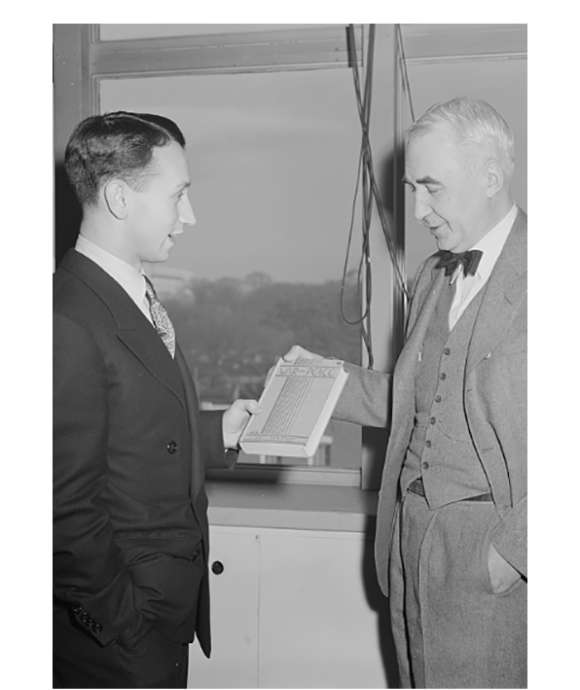
From Hiroshima to Human Extinction: Norman Cousins and the Atomic Age
In 1945 the American intellectual, Norman Cousins, was one of the first to raise terrifying questions for humanity about the successful splitting of the atom.
Ed Lengel, PhD
Edward G. Lengel is the former Senior Director of Programs for the National WWII Museum’s Institute for the Study of War and Democracy.
Cite this article:
MLA Citation:
APA Citation:
Chicago Style Citation:
